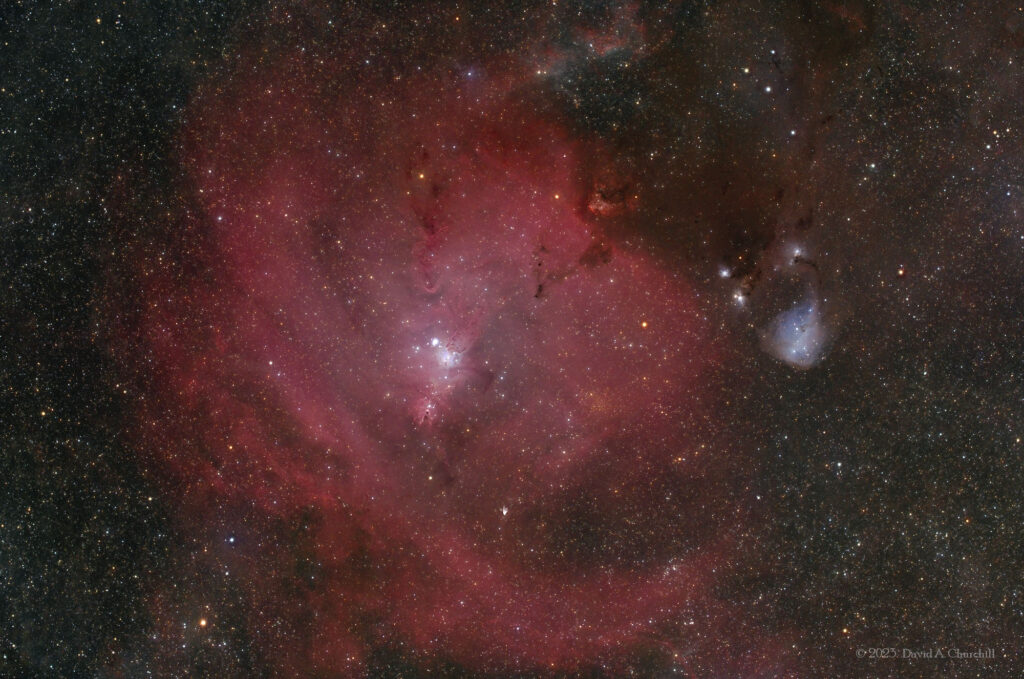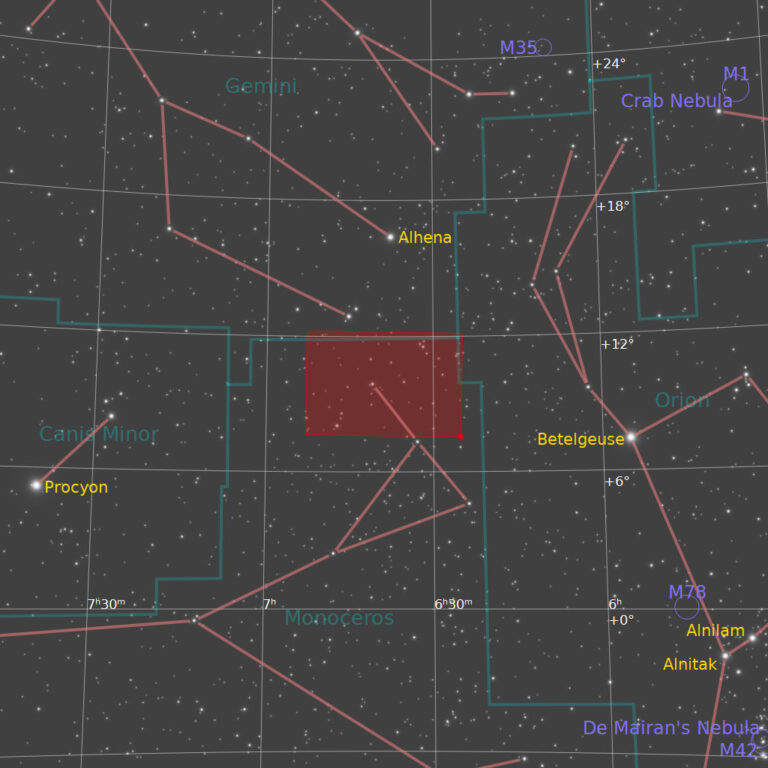NGC 2264
Cone Nebula, Fox Fur Nebula, & Christmas Tree Cluster. Emission Nebulae & Open Cluster, Monoceros
December 2023. Cave Creek Canyon Observatory, Arizona Sky Village
- Description
- Technical
- Links
NGC 2264 is the designation number of the New General Catalogue that identifies two astronomical objects as a single object: the Cone Nebula, and the Christmas Tree Cluster. Two other objects are within this designation but not officially included, the Snowflake Cluster, and the Fox Fur Nebula. All of the objects are located in the Monoceros constellation and are located about 720 parsecs or 2,300 light-years from Earth. Due to its relative proximity and large size, it is extremely well studied. NGC 2264 is sometimes referred to as the Christmas Tree Cluster and the Cone Nebula. However, the designation of NGC 2264 in the New General Catalogue refers to both objects and not the cluster alone. NGC 2264 is the location where the Cone Nebula, the Stellar Snowflake Cluster and the Christmas Tree Cluster have formed in this emission nebula. For reference, the Stellar Snowflake Cluster is located 2,700 light years away in the constellation Monoceros.
The Snowflake Cluster was granted its name due to its unmistakable pinwheel-like shape and its assortment of bright colors. The Christmas Tree star formation consists of young stars obscured by heavy layers of dust clouds. These dust clouds, along with hydrogen and helium are producing luminous new stars. The combination of dense clouds and an array of colors creates a color map filled with varying wavelengths. With varying youthful stars comes vast changes to the overall structure of the clusters and nebula. For a cluster to be considered a Snowflake, it must remain in the original location the star was formed.
The Snowflake Cluster was granted its name due to its unmistakable pinwheel-like shape and its assortment of bright colors. The Christmas Tree star formation consists of young stars obscured by heavy layers of dust clouds. These dust clouds, along with hydrogen and helium are producing luminous new stars. The combination of dense clouds and an array of colors creates a color map filled with varying wavelengths. With varying youthful stars comes vast changes to the overall structure of the clusters and nebula. For a cluster to be considered a Snowflake, it must remain in the original location the star was formed.
Telescope: Askar FRA300pro f5
Mount: Astro Physics Mach-1
Camera: ZWO ASI6200MC pro
Guider: ZWO Off-Axis-Guider / ZWO120MM Mini
Filters: Optolong UV/IR Cut Filter (Luminance)
L: 62×5 mins = 310 mins
Total Imaging Time: 5h 10m
Data Imaged remotely on 2 nights during December 2023.
Data acquisition & Processing by David Churchill.
None


